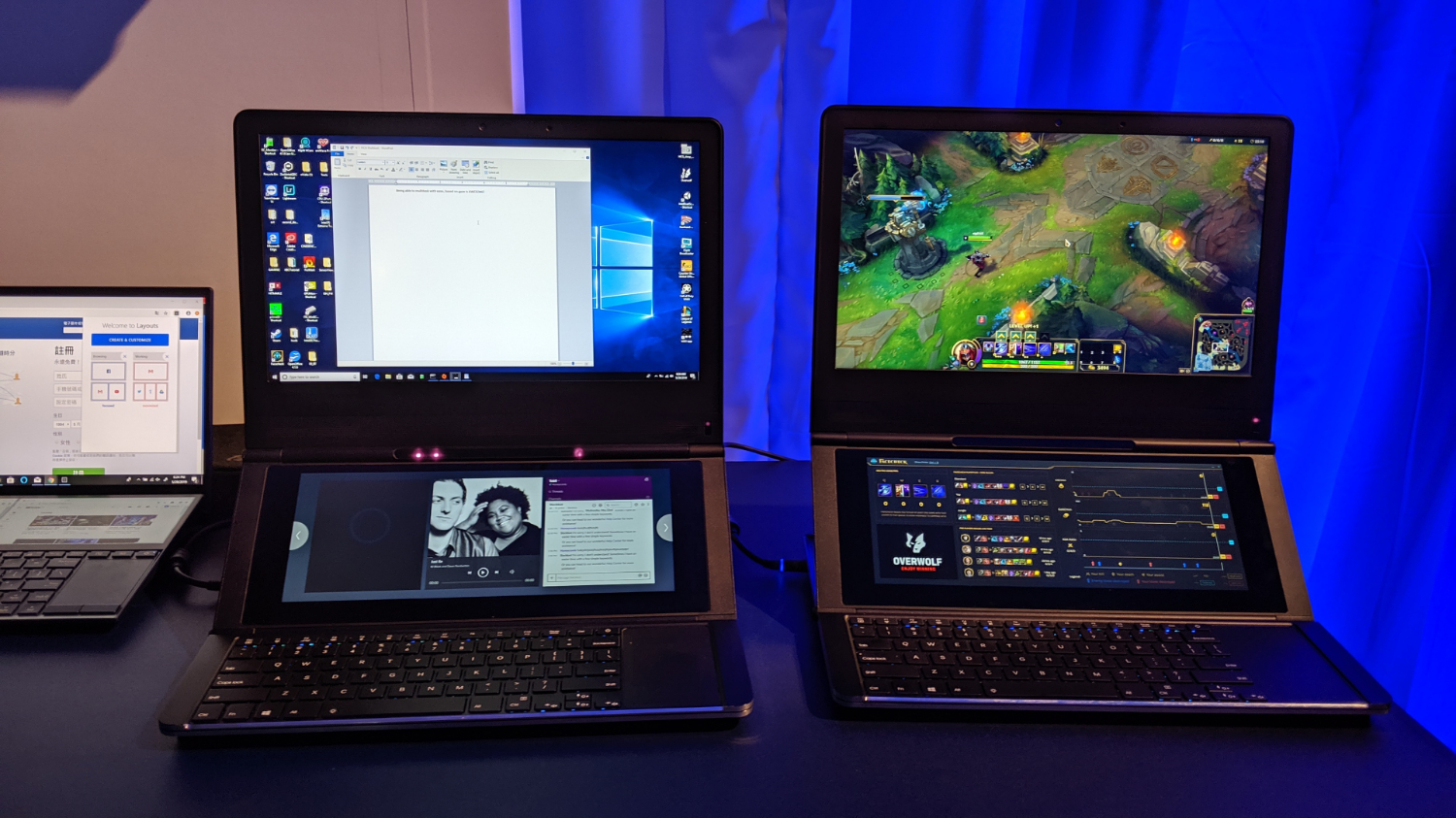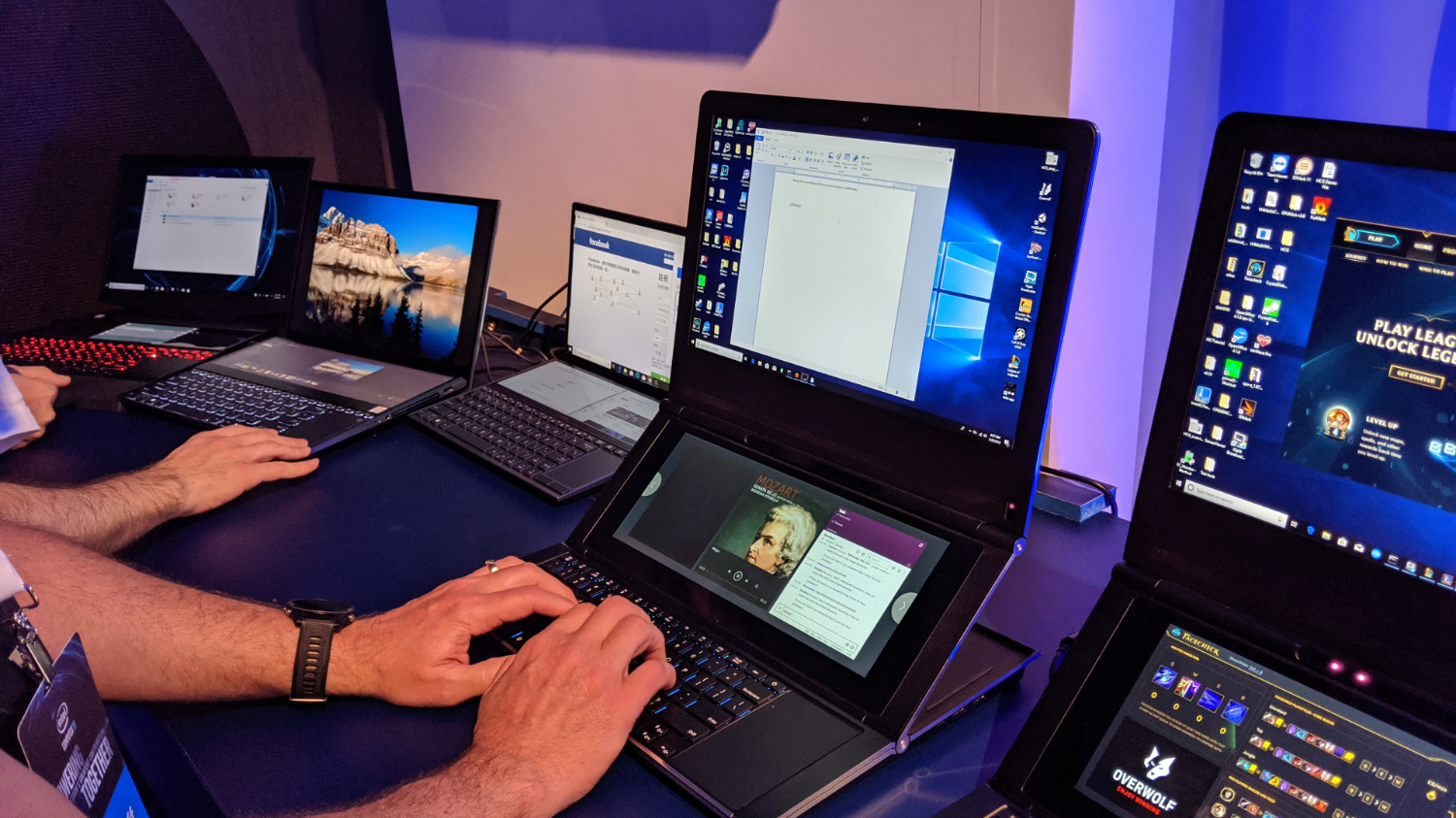Hands-On With Intel’s Dual-Screen Honeycomb Glacier Gaming Prototype
Dual-screens are starting to become more common on laptops: see the Asus ZenBook Pro Duo launched here at Computex this week, for instance, and Intel is already planning out more prototypes. At a press event at show in Taipei, the company showed off Honeycomb Glacier, a laptop equipped for gaming with two screens stacked one on top of the other.
It uses a unique dual-hinge design that stays propped up at your angle of choice. The bottom hinge uses a clutch mechanism, and you have to press a button to fold it back down. The top hinge is a standard tension hinge that you’d see in any laptop. It feels a bit rickety, but I’d expect better ergonomics in a product meant for mass production.
As for specs, the parts are all off-the-shelf, including an eight core / 16 thread, 9th Gen H-series Intel processor (they said it doesn’t have a four-number SKU) and an overclocked Nvidia GeForce GTX 1070. There’s a fair bit of room below the hinge, with a cooling apparatus to draw air against a custom motherboard to cool 175 watts of components, all with just one large fan. And despite just one fan, it measures 42 decibels.
There’s a Tobii eye-tracker in the hinge, and though the software definitely still needs time in the oven, I can see it making it easier to manage the two displays. I was able to use it to move my gaze between multiple windows and type without clicking to switch between apps.
The 15.6-inch, FHD resolution top display is where one would put a game or their main application, while the bottom is a great spot for social media, chat applications or managing streaming. That bottom screen is actually an automotive display (like I said, they build it from off-the-shelf parts) that measures 12.3-inches diagonally.
Two-screen devices have typically made me skeptical, but for gaming and productivity, I could see something like this making sense, and I’m curious to see if any OEMs will make something similar.
Get Tom's Hardware's best news and in-depth reviews, straight to your inbox.

Andrew E. Freedman is a senior editor at Tom's Hardware focusing on laptops, desktops and gaming. He also keeps up with the latest news. A lover of all things gaming and tech, his previous work has shown up in Tom's Guide, Laptop Mag, Kotaku, PCMag and Complex, among others. Follow him on Threads @FreedmanAE and BlueSky @andrewfreedman.net. You can send him tips on Signal: andrewfreedman.01
-
Giroro These dual screen laptops still bother me, but the hinge on this like it's at least stepping in the right direction.Reply
Can we please stop talking about the "diagonal" size of the second screens though? That measurement is somewhere between meaningless and dishonest when we are talking about these extremely wide non-standard aspect ratios. Or, are we going to have to start calling the macbook touch bar an 11" second monitor?

